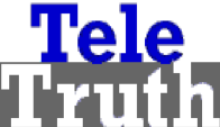David Isenberg, of
isen.blog, has
published a short history of Reedsburg's community fiber network that he previously wrote for the FCC when they were gathering evidence of successful networks they would later ignore in formulating a plan to continue the failed status quo of hoping private companies will build and operate the infrastructure we need.
Nonetheless, one cannot say that smart people like David did not try to help the FCC overcome its obsession with national carriers who dominate the conversations, and whose employees often work periodically with the FCC in what
we call the revolving door (which itself, is a reason the
FCC has been captured).
Back to Reedsburg; it is a small community approximately 55 miles northwest of Madison that just happens to have far better broadband service than just about anywhere else in Wisconsin.
David writes,
RUC first entered the telecommunications business in 1998, when it constructed a ring to tie its wells, its five electrical substations together and to provide Internet access for its high school, middle school and its school administration building. In planning the ring, the city asked Verizon and Charter if they would build it, but they were not responsive. RUS built a partly aerial, partly buried 7-mile ring of 96-strand fiber at a cost of about $850,000. Internet access was provided by Genuine Telephone, a tiny subsidiary of LaValle Telephone Cooperative which ran a fiber from LaValle, about 8 miles NW of Reedsburg.
As they were building the ring, local businesses asked to be connected as well. Reedsburg took the path that so many communities have followed, start by building for yourself and expand opportunistically. Of course, this requires that you originally engineer the network so it can be later expanded, which is good practice regardless of your future plans.
Reedsburg used bond anticipation notes, a financial mechanism that few others have used in building similar networks.
A local bank loaned the initial $5 million in bond anticipation notes for planning and construction.



